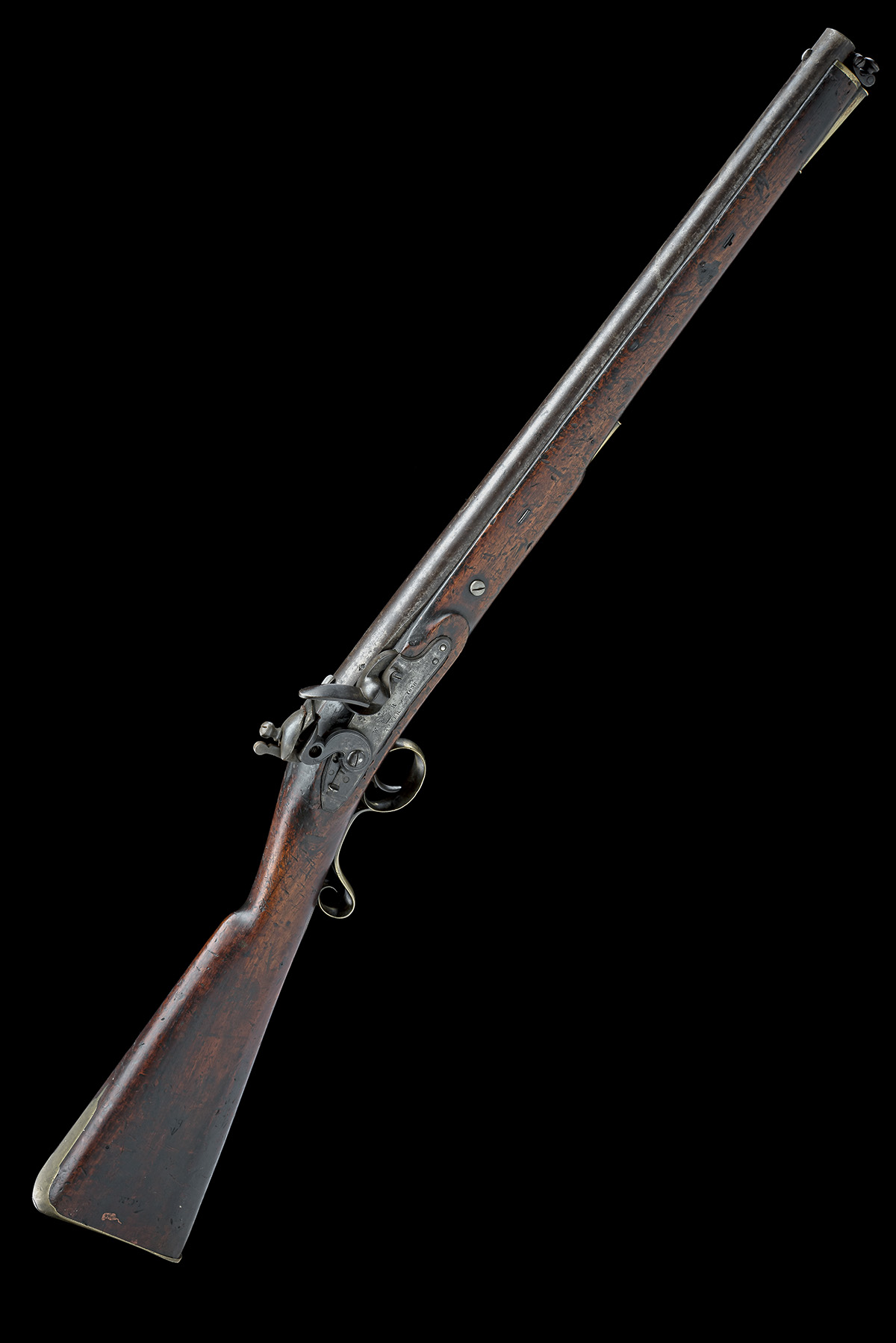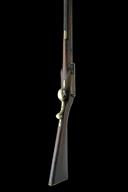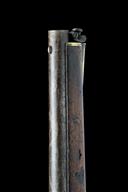[clock186962]Current Top Bid : £2750 has been bid
Product Details
AN EXCEPTIONALLY RARE .65 FLINTLOCK PATTERN 1833 MANTON CARBINE, CIRCA 1836, no visible serial number,
with 20in. Ordnance proof and inspected barrel fitted with a break-off breech, incorporating a raised fixed sighting groove, brass blade front-sight, and a short link swivel rammer hinged at muzzle, bevelled borderline engraved flat lock with stepped tail and bolt safety, the centre of the lock bearing the Crowned 'W.R. TOWER' cypher dated 1836, semi waterproof pan and borderline engraved swan-neck cock, full walnut stock fitted with regulation brass mounts including a flat style nose-cap incorporating a trumpet shaped rammer pipe, scroll trigger-guard, flat style side-plate and butt-plate, a sling bar is fitted to the left side of the action, the right butt stamped with the B.O. broad arrow mark together with the 1st Class reserve stamp and the small remains of what could have been a wax seal
Provenance: This is one of the rarest of all British military carbines and the last official flintlock carbine made for the British cavalry. It was reputedly designed by Charles Manton a relative of the immortal Joe who had been appointed Master Furbisher by the Board of Ordnance in 1829. The design was not totally that of Manton as he combined the best features of other makers such as E. Baker, H. Nock and C. Moore, in fact the first trial pattern was made by E. Baker, the lock with integral frizzen spring is modelled on the screwless lock of Henry Nock. The original design of carbine was modified several times before six were made and issued to the 15th Hussar's for trials in 1830, faults and weaknesses were found resulting in the manufacture of a further six improved carbines for more trials. Eventually a pattern was approved in 1833, and an order place for 1000 these were produced between 1835 and 1837. No more were produced due to the acceptance of the percussion system and the appointment of George Lovell as Chief Storekeeper. It would appear that most were scrapped accounting for their rarity today, very few examples are known to exist.
Please click HERE to view Terms & Conditions. Please note all Lots are listed in accordance with UK Law, for overseas buyers, please ensure you are familiar with your relevant local firearms and customs regulations before bidding.
Estimate £4,000-6,000










